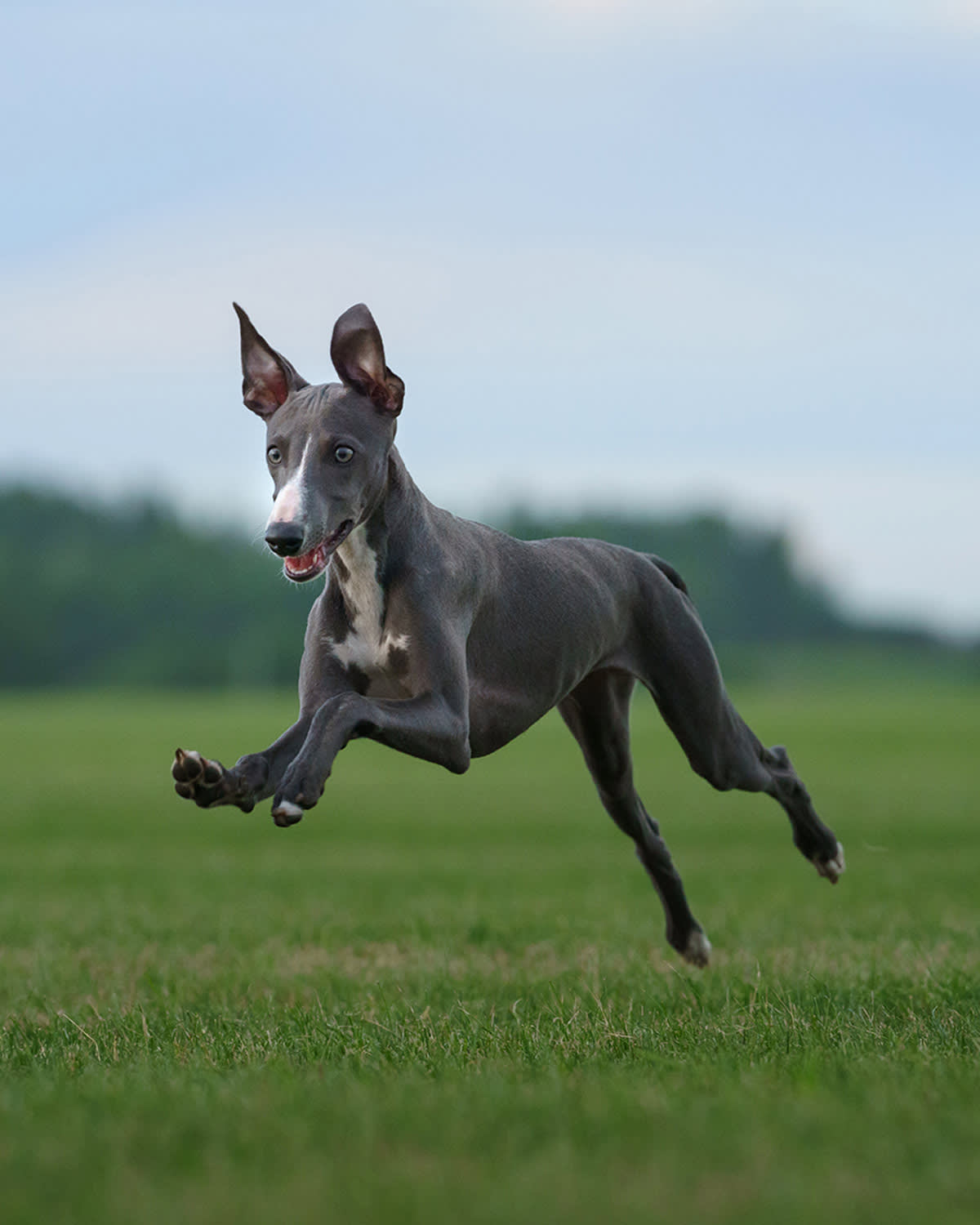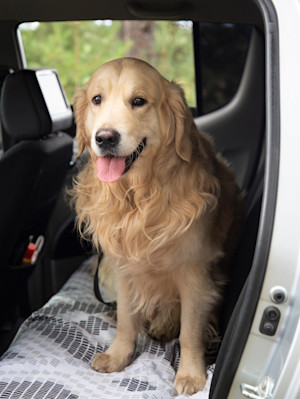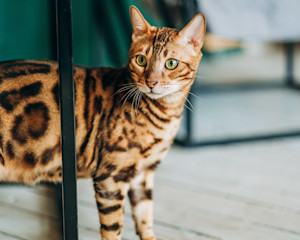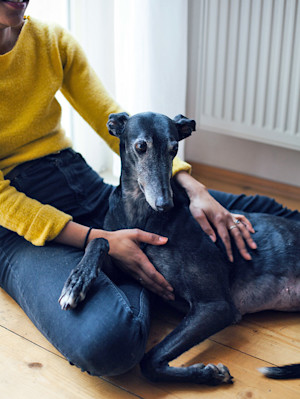Is Greyhound Racing Really About to Be Banned in Scotland?
The cruel sport could be coming to an end

Share Article
Greyhound racing has been part of British ‘sporting’ culture for nearly a century, with the first official track opening in Manchester in 1926. Once drawing crowds of thousands, the sport that the RSPCA says involves too high a price for Greyhounds has – thankfully – experienced a dramatic decline in recent decades. Today, fewer than 20 tracks remain open across the UK, with Wales announcing plans to ban the sportopens in new tab altogether earlier this year. Will Scotland be the next country to follow suit?
What is the Greyhound racing ban in Scotland?
When Scotland’s last operational Greyhound racing track – Thornton Stadium in Fife – closed its doors indefinitely in March, campaigners hoped it would be the end of the sport in Scotland. And now, Members of the Scottish Parliament (MSPs) are considering a bill that would ban Greyhound racing in Scotland for good.

Get (totally free) deals for food, treats, accessories, tech and way more pet parenting must-haves.
A bill has recently been proposed to make it an offence to permit Greyhounds to race at racetracks in Scotland and would treat the offence with the same seriousness as the Animal Health and Welfare (Scotland) Actopens in new tab.
What does the proposed law say?
In 2024, Mark Ruskell MSP responded to the significant demand for an end to dog racing in Scotland and introduced the Prohibition of Greyhound Racing (Scotland) Billopens in new tab, which would ban Greyhound racing. Ruskell secured the support of 24 cross-party MSPs giving him permission to bring the bill forward. In April 2025, the bill was formally introduced to parliament.
The bill proposes to make it an offence to permit Greyhounds to race at racetracks in Scotland and would treat the offence with the same seriousness as the Animal Health and Welfare (Scotland) Act.
While the penalties are not set out specifically in the proposed legislation, penalties for serious offences in the animal welfare legislation can range from a large fine or up to five years in prison. Offenders can have their animals seized and be banned from owning or working with animals for a specified period or indefinitely.
The proposed bill is currently working its way through parliament, which will be in recess until September 2025. There will be no new news on the bill until autumn 2025 at the earliest.
Why is the ban being proposed?
There are a number of reasons that animal welfare charities, politicians and members of the public are calling for a ban on Greyhound racing in Scotland.
Greyhound racing is inherently dangerous because it involves several high-prey-drive dogs, in chase mode, running at speeds of over 40mph around oval tracks. The innate desire to catch the mechanical hare means they won’t slow, so instead they risk collision with the other dogs in the race. This is where injuries and fatalities most commonly occur.
Off the track, the general living conditions many Greyhounds experience are also a cause for concern. These relate to space provided in kennels, lighting levels, exercise opportunities, sanitation, diet, and access to dental and vet care.
According to the latest dataopens in new tab from the Greyhound Board of Great Britain (GBGB), the sport’s regulator, 109 Greyhounds died trackside in the UK in 2023. A further 4,238 injuries were recorded.
Gill Docherty, founder and trustee of Scotland Against Greyhound Exploitationopens in new tab, has campaigned for years outside Scottish racetracks. Her 2019 petitionopens in new tab demanding a ban on the sport made history as the most signed petition in the Scottish Parliament, with 29,676 people supporting it. This petition directly prompted the proposed legislation to ban greyhound racing in Scotland.
Is Greyhound racing already banned in Scotland?
You may wonder if Greyhound racing is already banned in Scotland because there are currently no active meetings or open race tracks, but the sport is still legal; there is nowhere for the races to take place.
Are any tracks still active?
Greyhound racing historically thrived in Scotland and the rest of the UK. In the 1940s, there were more than 20 race tracks in Scotland, but the sport is now on pause, with the last remaining track in Scotland closing its doors recently.
Shawfield in Rutherglen closed in 2020 due to the pandemic and became derelict. Thornton Stadium in Fife, an unlicensed track, closed until further notice in March 2025 after it was unable to find a betting partner.
How is Greyhound racing regulated in Scotland?
In England, the use of racing Greyhounds is subject to the Welfare of Racing Greyhounds Regulationsopens in new tab, 2010. In Scotland, however, there are no special provisions or legislation to cover the commercial use of animals in racing. A statutory code of practice for the welfare of dogsopens in new tab also applies to all dogs in Scotland as part of the Animal Health and Welfare (Scotland) Act 2006.
The Greyhound Board of Great Britain (GBGB) is the regulatory body for licensed Greyhound racing in the UK. It oversees 20 stadiums nationwide and ensures each race is run fairly and cleanly. The board is also responsible for regulating the welfare and care of all racing Greyhounds, from registration to retirement.
Issues can arise when tracks are unlicensed, like Thornton in Fifeopens in new tab, as there is no requirement for publication of data from this track on injuries, death or animal welfare.
Is Greyhound racing going to be banned in the UK too?
In February 2025, the deputy first minister of Wales, Huw Irranca-Davies, announced his government will prohibit the sport “as soon as practically possible”.
There are “absolutely no plans” to extend a Greyhound racing ban announced in Wales to the rest of the United Kingdom, the UK culture secretary Lisa Nandy has said. Nandy told MPs she appreciates the “joy” greyhound racing brings and its “economic contribution.”
Comparison with England, Wales and Ireland
Greyhound racing remains legal in England, Republic of Ireland, Northern Ireland, Scotland, and Wales.
Greyhound Racing Ireland (GRI) is a commercial semi-state body responsible for the control and development of the Greyhound industry in the Republic of Ireland.
GRI has licensed a total of 15 tracks in the Republic, of which nine are owned and controlled by the organisation. The remainder are owned and operated by private enterprise. GRI operates a code of practice that applies to any person who keeps, breeds, rears, trains, races, trades or transports a Greyhound in Ireland.
What do supporters and opponents of the ban say?
The debate on whether Greyhound racing should be banned is heated, with both sides passionate about their respective causes. Many campaigners are owners of ex racing Greyhounds, meaning they have insight into the long-term effects of racing on the animals.
Animal welfare campaigners’ arguments
Greyhounds are widely regarded as affectionate and sensitive creatures, and animal rights charities say the welfare issues caused by the Greyhound racing industry can only be stopped by calling a halt to the practice.
Animal charity OneKindopens in new tab, one of nine animal welfare organisations who have joined forces to call on the Scottish Government end Greyhound racing in Scotland have highlighted the following issues with the practice:
Inadequate kennel conditions: many racing Greyhounds are kept in kennels that do not allow the dogs to thrive. In the worst instances, dogs can suffer from untreated wounds and injuries, receive inadequate veterinary care and be shouted at or roughly treated.
Doping: GBGB’s records show that dogs in the racing industry have been doped with performance-enhancing drugs, including class A substances.
Overbreeding: thousands of puppies are bred to supply a racing pool across the UK. However, not all of these dogs will make the racing grade, and thus, some will be superfluous to the industry's needs. Not all Greyhounds will be passed to rehoming centres. Sadly, some may be killed instead.
Long-term impact: when rescued, Greyhounds can be overwhelmed by the sounds, smells, people and other animals living outside of the racing industry. Many will not have been adequately socialised and, as a result, may be nervous around other dogs and humans to begin with.
Counter-arguments from the racing industry
Defenders of Greyhound racing say the sport has been a part of British culture for many years, offering not just entertainment but also contributions to the economy, with venues employing a significant number of people and contributing to local employment rates.
Greyhound racing trainers and owners insist their sport is a ‘misunderstood’ hobby that prioritises the welfare of dogs. Paul Brignal, the owner of Thornton Stadium, says despite not being licensed by GBGB, the track has kept a log of serious injuries since 2022, recording six in that time, including one dog who was put down after suffering a broken leg.
Regarding the safety of racing dogs, Brignal says: “I assure you it is safer for a Greyhound to run around a prepared track than it is running around a park or golf course, where a rabbit hole or tree stump can cause a far more horrendous injury.”
What happens next for Greyhound racing in Scotland?
With Thornton Stadium still closed, Greyhound racing in Scotland may end before a ban is implemented. But campaigners are determined to get the bill passed to prevent the sport from starting up again.
Timeline and next steps in parliament
The billopens in new tab is currently at stage one of the four-part process to become an Act of Parliament. It has been allocated to the Rural Affairs and Islands Committee, which has yet to agree on its future work plan for after the summer recess. They currently do not expect the bill to go before the committee until the autumn of 2025 at the earliest. The bill will then go through a series of amendments and debates before a vote to determine if it will become an Act of Parliament.
How you can get involved
If you wish to support the proposed bill and you live in Scotland, you can use a letter template set up by OneKind to contact your MSP hereopens in new tab.
If you live outside of Scotland, OneKind has set up a letter templateopens in new tab to contact the Minister for Agriculture and Connectivity, Jim Fairlie, urging him to support the bill as it progresses through Parliament.
Final thoughts: what the ban could mean for dogs and Scotland
Campaigners hope that a ban on Greyhound racing in Scotland would mean that in the future Greyhounds would be bred not for sport, but to be kept as family pets, where they could live out their lives in comfort, without the fear of injury or illness for the sake of entertainment.
Frequently asked questions: Greyhound racing in Scotland
When is the Scotland Greyhound racing ban coming into place?
The proposed ban on Greyhound racing is still under consideration at the Scottish Parliament. It is unlikely that a decision will be made on the bill in 2025.
Is there Greyhound racing in Glasgow or Edinburgh?
There is currently no Greyhound racing in Edinburgh or Glasgow. The last track in Glasgow closed during the pandemic and never reopened.
Are Greyhounds still raced in Scotland?
While there is still one track in Scotland, Thornton in Fife, racing has not taken place here since March 2025.
What is happening with the Greyhound stadium in Thornton?
Thornton Stadium is closed for the foreseeable future, as the owners could not secure a betting partner. The owner has no current plans to reopen the track.
Resources
Adair, Jamie. “Welsh Government Announces Landmark Decision to End Greyhound Racingopens in new tab.” League.org.uk, League Against Cruel Sports, 27 Feb. 2025.
“Proposed Prohibition of Greyhound Racing Scotland Billopens in new tab.” Parliament.scot, The Scottish Parliament, 2024. Accessed 18 June 2025.
Cochrane, Angus. “The Battle to Ban Greyhound Racing in Scotlandopens in new tab.” BBC News, 22 Apr. 2025.
GOV.UK. “Animal Health and Welfare (Scotland) Act 2006.opens in new tab” Legislation.gov.uk, 2019.
“Injury and Retirement Data.opens in new tab” Greyhound Board of Great Britain, 2024.
Docherty, Gillian. “Scotland against Greyhound Exploitation - SAGEopens in new tab.” Facebook.com, 2022. Accessed 18 June 2025.
“Petition: End Greyhound Racing in Scotlandopens in new tab.” Petitions - the Scottish Parliament, Petitions, 2019. Accessed 18 June 2025.
DEFRA. Code of Practice for the Welfare of DOGSopens in new tab. 2017.
“The Welfare of Racing Greyhounds Regulations 2010opens in new tab.” Legislation.gov.uk, 2010.

Catherine Renton
Catherine Renton is a writer based in Edinburgh whose work has been featured in Vogue, Elle, Glamour, Refinery29, and the Guardian, among others. When she's not writing, she is tending to the every whim of her cocker spaniel Bonnie, who loves belly rubs, people and chasing squirrels.
Related articles
![xl bully dog lies in the grass in the sun]()
How Much Do You Actually Know About XL Bullies?
How much do you really know about the dog that everyone is talking about?
![A dog barks while a woman in the background is on a laptop]()
How Long Can a Dog Bark For Before You Get in Trouble?
It could mean a problem with your dog, not just your neighbours
Are American Bulldogs Banned in the UK?
Everything you need to know about having an American Bulldog in the UK
![picture of a labrador sitting on a blanket in the back of a silver car]()
Is it Illegal to Leave Your Dog In the Car?
When leaving your pet becomes illegal
![a picture of a bengal cat]()
Are Bengal Cats Legal In the UK?
Learn about why this beautiful cat is considered contraversial by some
![a woman pets her elderly black greyhound]()
Greyhounds: The History and Origins of Sighthounds
Where did the Greyhound originate? Learn more about the history and genetic origins of the sighthound group





